Inclusive by Universal Design: Swimming for All
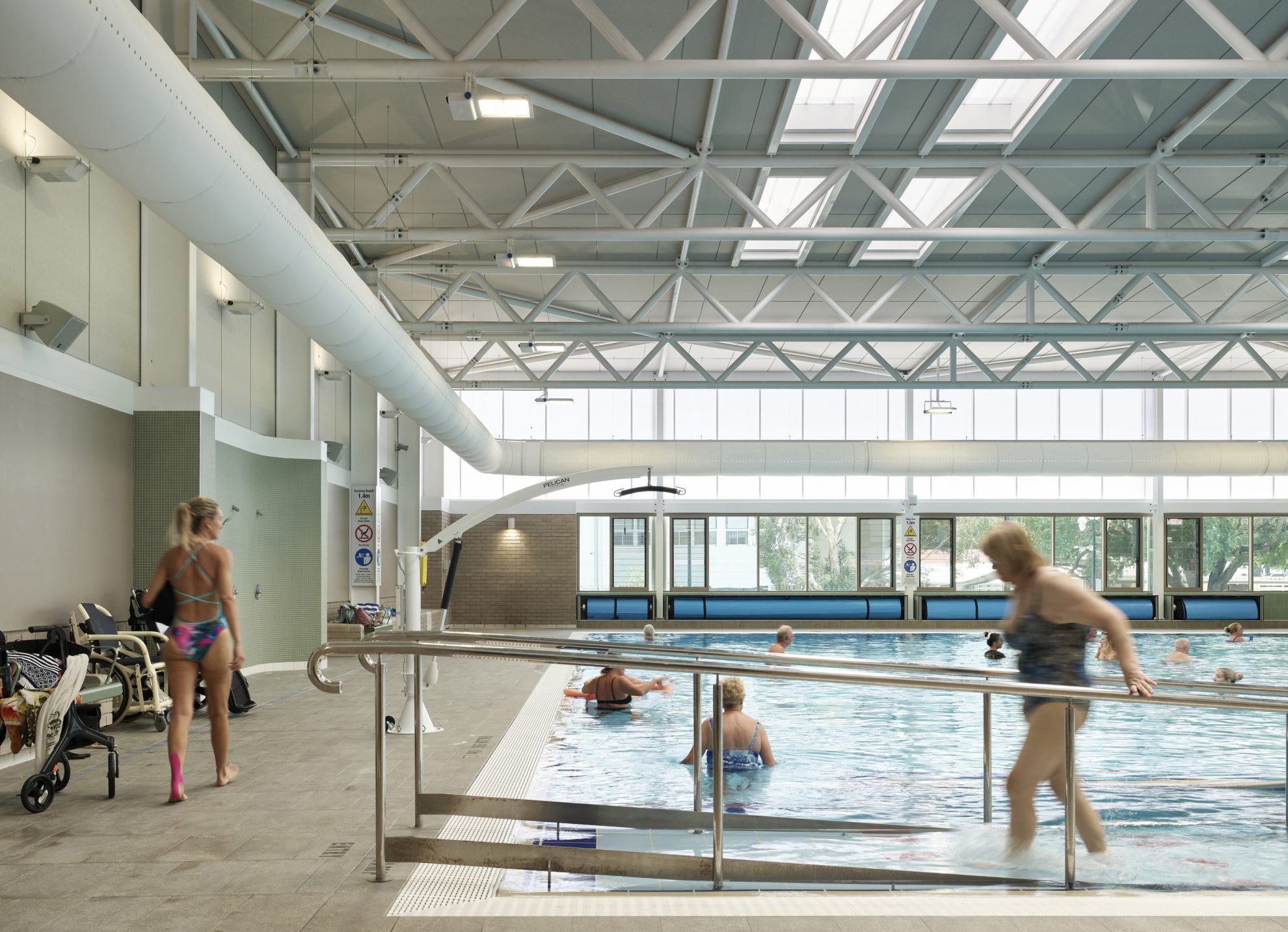
Australians love swimming, and swimming is Australia’s most popular sport with over six million participants annually. Yet, of the 4.4 million Australians living with disability, only one in four participates in sport, despite 75% expressing interest. This gap highlights the urgent need for more accessible aquatic facilities.
When designed with Universal Design principles, aquatic centres become safe, welcoming spaces where everyone can participate confidently and comfortably. Accessibility is not just ramps, lifts, or handrails – it’s a philosophy embedded at the heart of design, and a human right.
But what does this look like in practice?
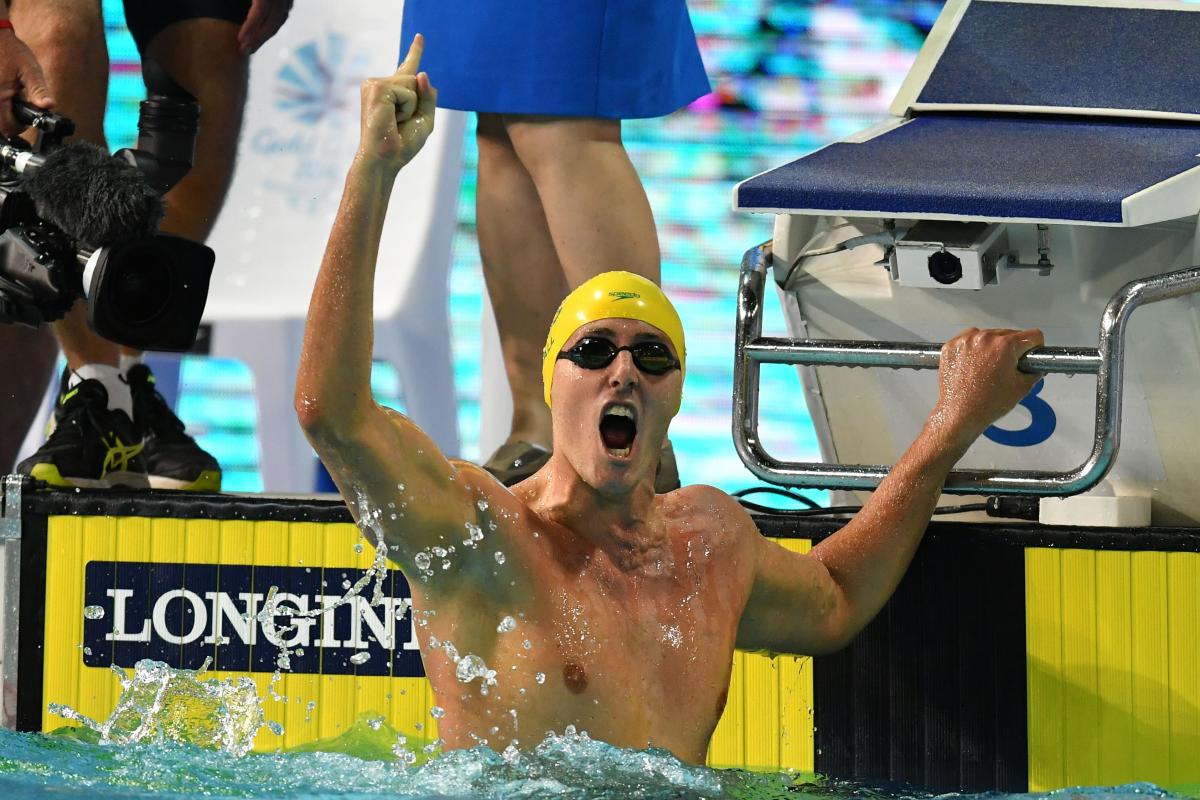
Universal Design in Practice
Universal Design ensures spaces are usable by the widest range of people, regardless of age, ability, or background. Its principles – equitable use, flexibility, perceptible information, tolerance for error, low physical effort, and appropriate space – guide inclusive aquatic environments. In practice, this translates to considerations such as:
- Multiple access points such as ramps, pool lifts, transfer stations, and sloped entries.
- Environmental comfort through glare control, acoustic treatments, and ventilation that reduces chloramines.
- Dignified changing facilities with accessible showers, grab bars, companion seating, and privacy features.
- Legibility and orientation using colour contrast, tactile cues, and clear depth markings.
- Community-focused programming that accommodates neurodiverse users, school programs, fitness enthusiasts, and casual swimmers.
These considerations ensure aquatic centres are safe, welcoming, and empowering for all users, supporting inclusion both in the water and throughout the facility.


Para-Athletes Advisory Group Forum co-hosted by COX & Hassell
Left Image: [Left to right] Emma Townsend, Andrew Noonan, Jamie Barkley, Stuart Harper, Patrick Ness, Dayna Crees, Vanessa Low AOM, Jaryd Clifford, Sam McIntosh. Right Image: [Left to right] Dayna Crees, Vanessa Low AOM, Jaryd Clifford, Sam McIntosh.
Leading by Example
In partnership with Hassell, we recently held a Para-Athletes Advisory Group Forum, bringing together four Paralympians: Dayna Crees, Jaryd Clifford, Sam McIntosh, and Vanessa Low OAM. The forum provided invaluable insight into what matters most when designing accessible spaces, reinforcing the importance of integrating Universal Design principles from concept to completion.
Vanessa Low OAM,
Long Jump T63 Paralympian
(London 2012, Rio 2016, Tokyo 2020, Paris 2024)
If it’s made for people with disabilities, it’s made for everyone.
Below, we highlight three projects that successfully embedded Universal Design principles, going beyond compliance to create genuinely inclusive and accessible spaces.
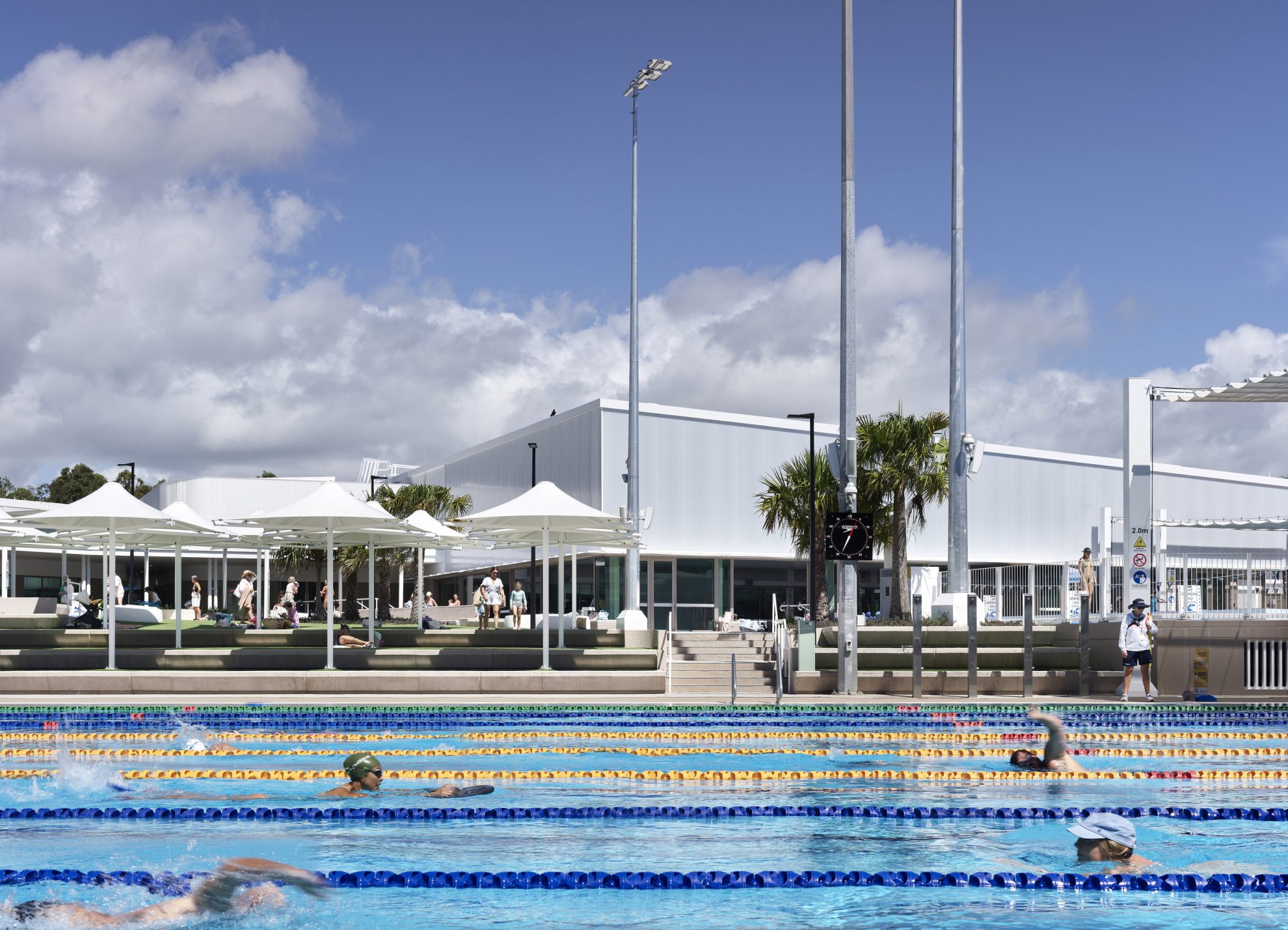
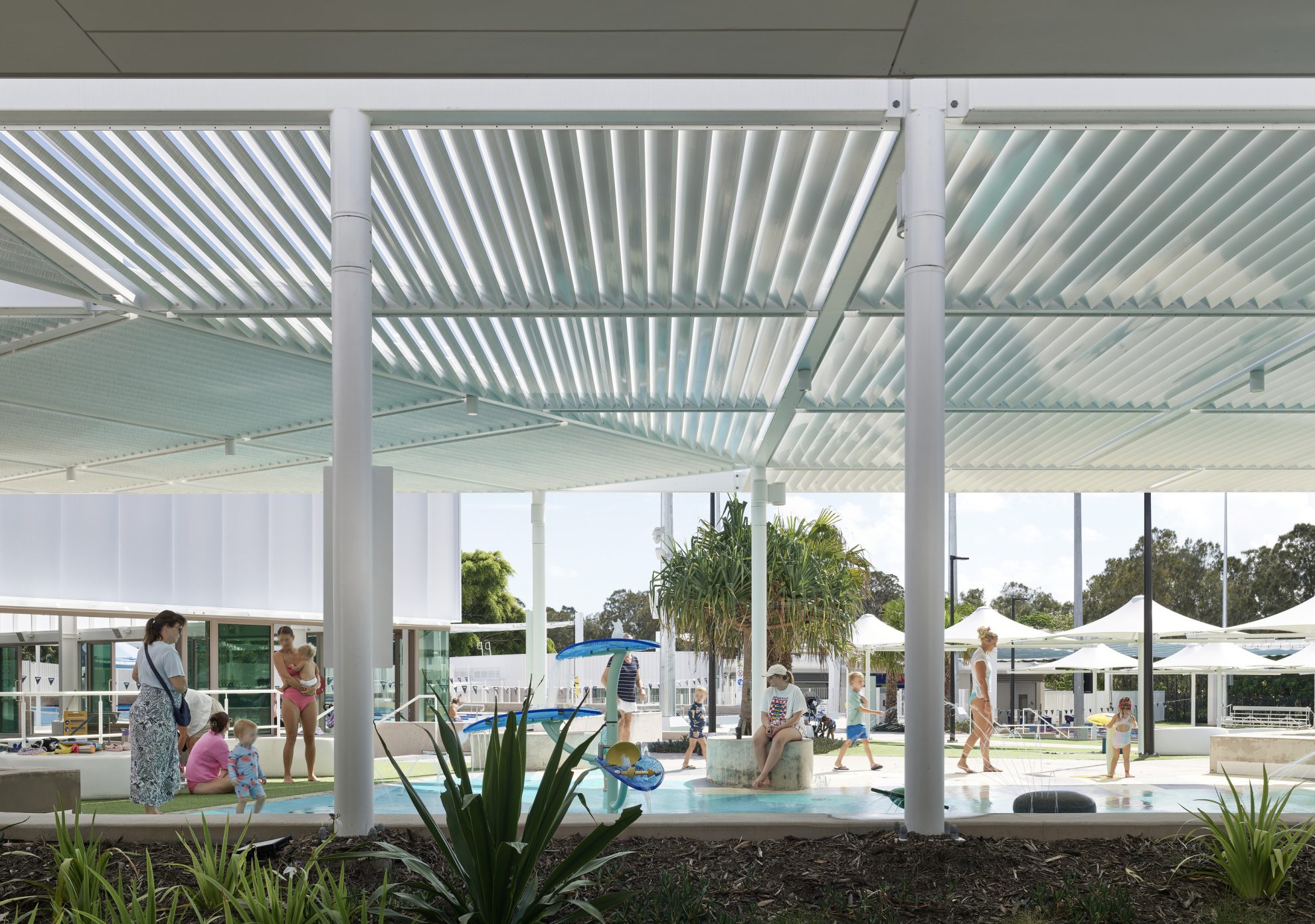
Palm Beach Aquatic & Community Centre, QLD
COX, in association with Liquid Blu, transformed the Palm Beach Aquatic and Community Centre into a landmark, multi-use hub for the southern Gold Coast. Universal Design strategies started from beyond the site boundary, with levels carefully resolved to balance flood immunity, existing pool levels, and equitable drop-off and arrival sequences. The centre’s open, transparent architecture integrates seamlessly with surrounding parklands and wetlands, while an elevated podium doubles as a civic space, connecting the community to the landscape.
Accessibility and Universal Design were central to the project. Enhanced provisions exceed Australian standards, ensuring all pools and facilities are inclusive for people with diverse physical and cognitive needs. Features include multiple pool entry options (ramps, stairs with visual contrast, mobile lifts), a certified Changing Places facility, wheelchair-accessible spectator seating strategically located to provide excellent sightlines and exceeding required standards, hearing augmentation systems, and high-contrast tactile wayfinding.
Arrival and circulation are also fully accessible, with a dedicated bus stop, drop-off/pick-up areas, disability car parks, ramps, lifts, automatic doors, non-slip surfaces, and tactile indicators at stair landings. Changing and amenities spaces include accessible toilets, additional non-certified changing spaces, and flexible multipurpose rooms with push-button access. Tactile and high-contrast signage with Braille, alongside acoustic and visual emergency systems, enable independent navigation and safety for all visitors.
Within six months of reopening, visitation and revenue nearly doubled forecasts, reflecting strong community engagement. Palm Beach goes beyond standard requirements to ensure that every visitor, regardless of physical or cognitive ability, can fully enjoy and participate in its offerings.
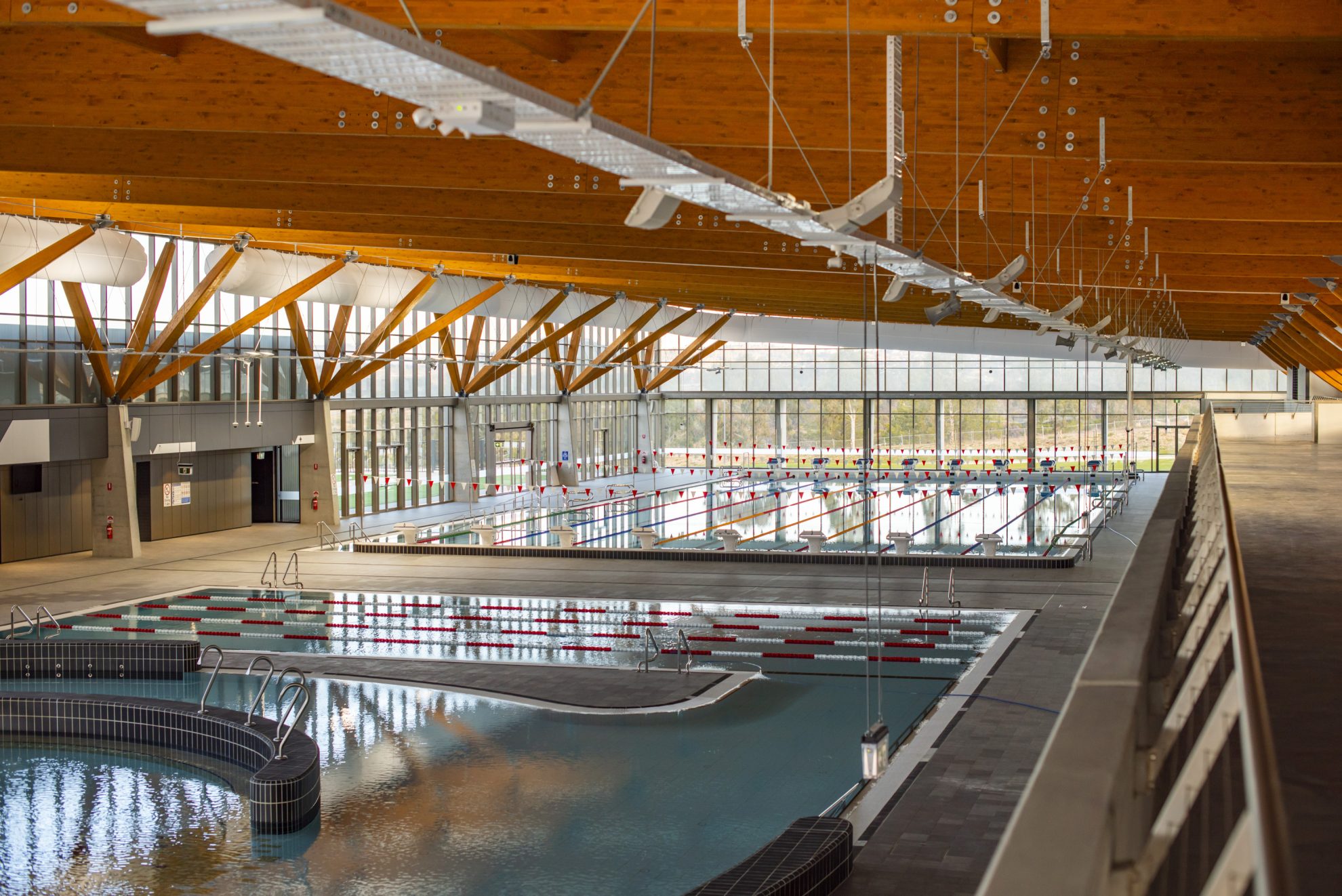
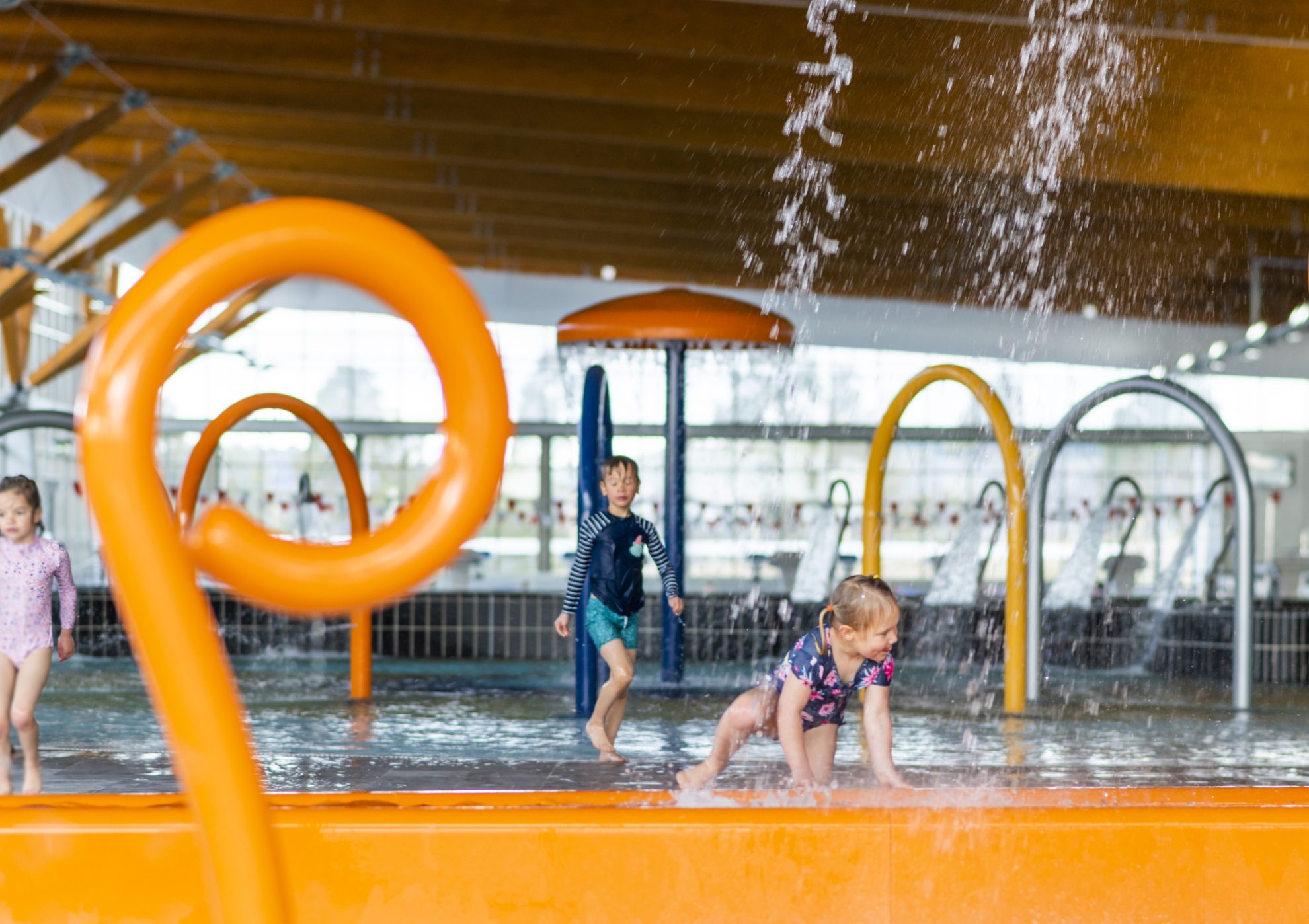
Nestled below Mt Stromlo Observatory, Stromlo Leisure Centre serves the rapidly growing Molonglo community. Facilities include an eight-lane 50m lap pool, learn-to-swim pool, toddler splash park, gym, and café.
Universal Design outcomes are central to Stromlo’s design. A generous zero-depth leisure pool entry with discreet railings and seamless circulation between leisure, learn-to-swim, rehabilitation, and training pools ensures inclusivity and equitable access for all users. All play areas are accessible, while diverse and generous change facilities provide separate cubicles, family and group change areas, and fully accessible adult change provisions. Beyond standard accessibility requirements, COX collaborated with Kane to advocate for Changing Places facilities, ensuring inclusivity was maximised even under Value Management pressures.
These thoughtful strategies allow children, adults, and older users to safely and comfortably engage in aquatic, rehabilitation, and fitness activities. Sustainability is embedded through material choice, longevity, and connection to place, demonstrating that Universal Design can enhance both inclusivity and the overall user experience.
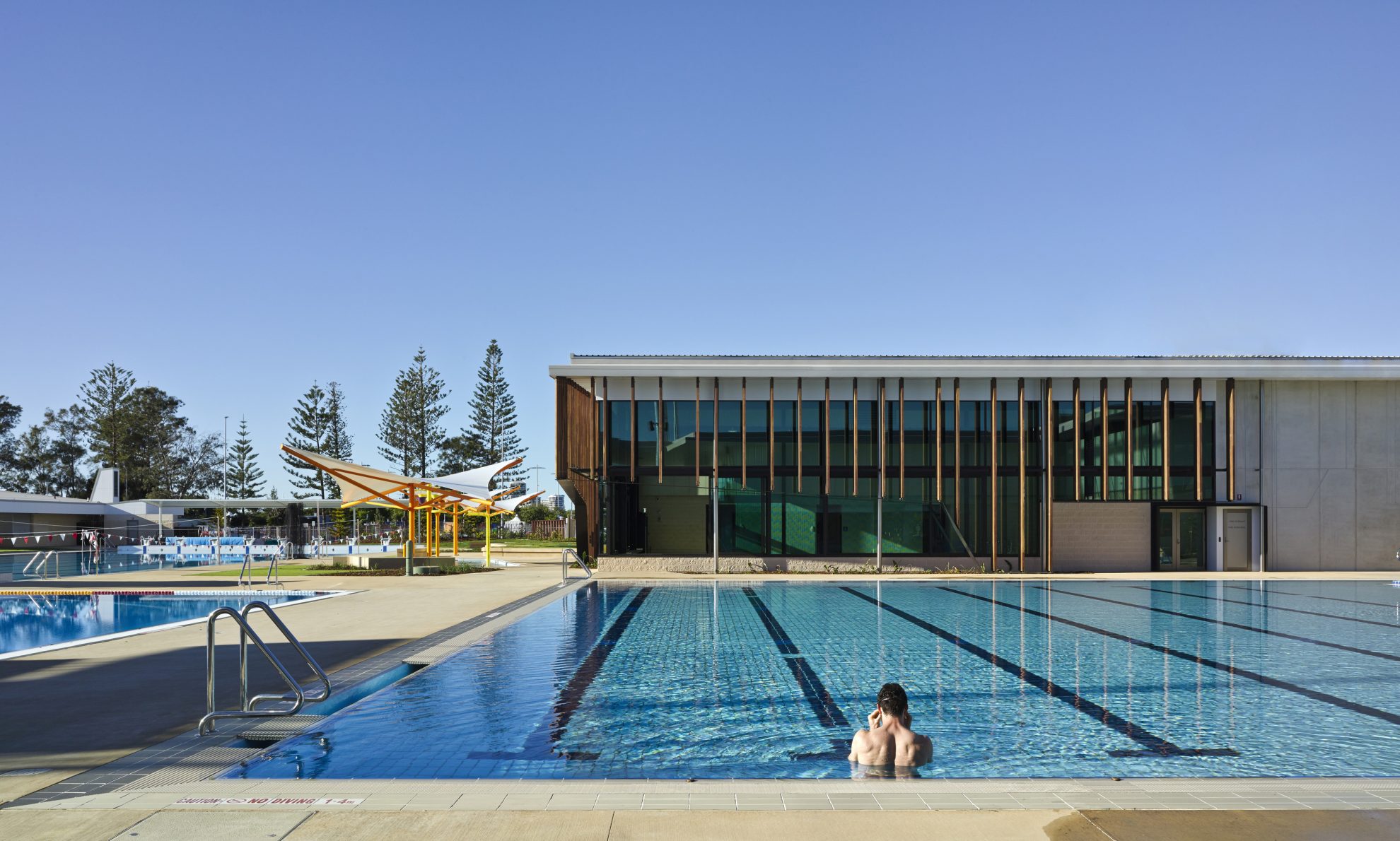
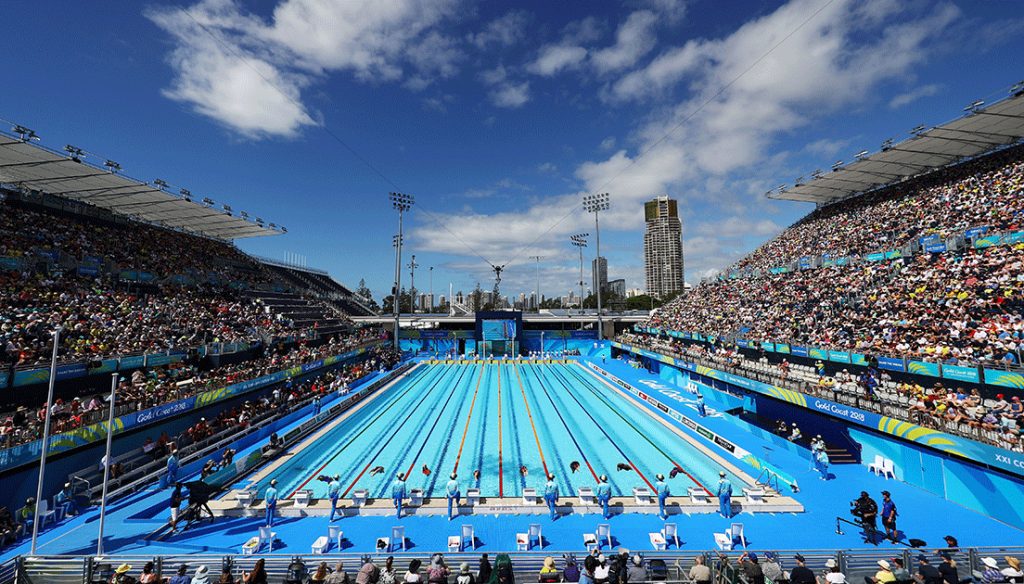
Gold Coast Aquatic Centre, QLD
Redeveloped for the 2018 Commonwealth Games, the Gold Coast Aquatic Centre transformed the 1960s Southport Pool into a multi-purpose facility for both elite competition, training and community use. A series of pools are arranged around a unifying deck, connecting visually with the Broadwater Parklands and enhancing the community experience. Elevated podiums surrounding the pools provide shade and support temporary grandstands.
The facility features an Olympic-size pool, eight-lane training pool, program pool, diving pool, and children’s play pool, complemented by a gymnasium, dry dive facility, community rooms, and café. The venue is expandable to 10,000 seats for major events. The centre’s flat, contiguous layout was designed for seamless mass movement, ensuring accessibility and usability during both everyday use and major events.
The success of the pool has meant expansion is projected and the city of Gold Coast have engaged COX to prepare a 20-year Masterplan for the site.
As these and many more of our projects across sectors showcase, Universal Design is not just a philosophy – it’s a human right. By embedding Universal Design principles into every aspect of a project, architects can help deliver spaces that are safe, welcoming, and empowering for all.